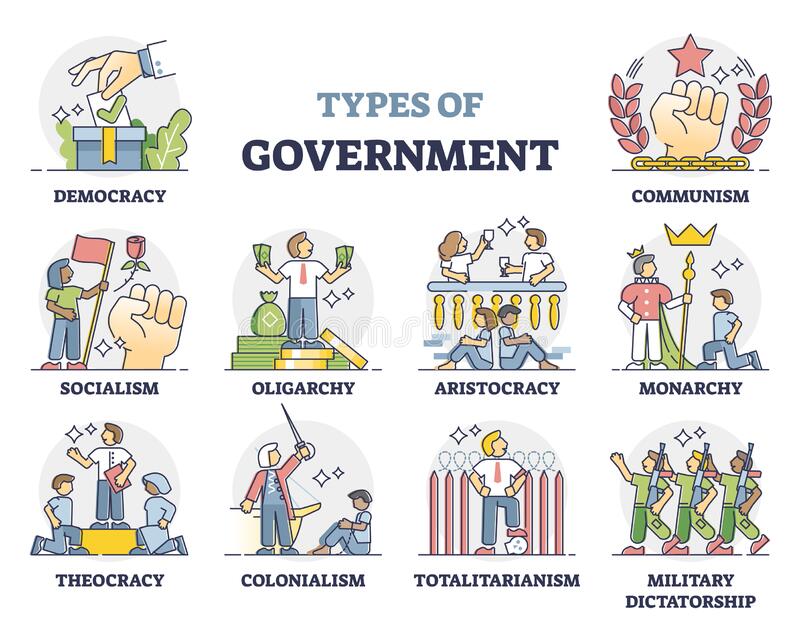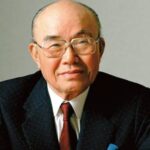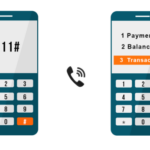Africa as we know it is an emerging continent. Countries here have had different types of government that has been practiced at various times in their history.
Having a stable form of government not only strengthens the political space of a country, it also unites the people and strengthens the economy in the process.
Sadly, this is not the case for most African countries as their unstable forms of government have been part of the reasons why they have experienced weak economies and unstable political systems.
Nonetheless, below are the types of government practiced in 20 major African countries:
1. South Africa

South Africa’s government functions as a representative democratic republic in a parliamentary system. This government framework means that people are chosen by the general population to represent their interests. The President, who is both the Head of State and of Government, is in charge of this country. Under the Constitution, the South African government is divided into three branches: executive, parliamentary, and judicial.
2. Nigeria

Nigeria is currently practicing the democratic federal system. The president is the Head of State and the government, and the rules governing the country include three arms and levels.
The federal head of state and government is currently President Muhammadu Buhari.
But the popular person said that the government is a necessary evil, even in its best condition, and in its worst condition, it is intolerable. It is not surprising, therefore, that no matter what system of government has been applied, many Nigerians are still not satisfied with the way the country is governed.
3. Egypt

Egypt’s contemporary country is located in north-eastern Africa and partly in western Asia, bordering Sudan, Libya, Israel and Palestine. It is known to have been the Arab Republic of Egypt. The independence of Egypt from the United Kingdom was technically achieved in 1922; the independent Republic of Egypt was formed after the Revolution of 1952 until 1953.
The Arab Republic of Egypt now has a unitary, semi-presidential, republican government under its current constitution. The head of state in Egypt is the President of Egypt, while the Egyptian prime minister is the head of the government. The Prime Minister is in charge of the executive branch and is working on law passing with the Egyptian legislature.
On the other hand, the President manages the Egyptian administration’s executive branch and commands the Egyptian army. It is the unicameral House of Representatives of the Egyptian Parliament.
4. Ghana

Ghana is a uniform, multi-party parliamentary presidential constitutional democracy. It was until January 1993, when the military came to the Fourth Republic of Ghana following the presidential and parliamentary elections, that Ghana alternated between civilian and military governments. In 1992, Ghana’s Constitution divided powers between the Ghana military commander-in-chief, the Parliament (Ghana’s parliament), cabinets (Ghana’s cabinet), the State Council (Ghana’s Ghanaian State Council) and the independent judiciary (Judiciary of Ghana). The Ghana government is elected every four years by universal suffrage.
5. Senegal

In 1963, the first Senegalese Constitution was adopted and revised until March 1998. A new constitution, adopted in January 2001 and amended since, proclaims fundamental human rights, respect for individual and collective rights, political, trade union and freedom of religion, and a democratic and secular state.
Senegal is a republic with several parties. The 2001 Constitution provides for a strongly centralized presidential regime, which is the president who can be elected for two seventy-year terms and elected by direct universal universal suffrage. The president appoints ministers. The majority of the Senegalese members shall be elected directly and the remaining members shall be indirectly elected. All lawmakers are serving terms of five years. There should be separate powers of the judiciary, the executive and legislative.
6. Cote d’Ivoire

The Ivory Coast Republic is a presidential democracy. In 1960, the country became an independent republic and in the constitution it had a centralized government. Despite the dictatorial regime’s intolerance towards the opposition, the country flourished economically during the leadership of the first president. Calls for democracy led to political tensions in the country at the end of the 20th century, which culminated in the first civil war in Ivory France in 1999. The civil war led to the adoption in 2000 of a new constitution establishing a united government.
7. Morocco

The Moroccan government is exercised as a constitutional parliamentary monarchy. The monarch carries out governing functions in accordance with the constitutional regulations under this form of government. There are officers here from a number of political parties, and the Prime Minister is, rather than the monarch, the Head of Government. Morocco’s Constitution sets out to separate government powers by creating three branches: the executive, legislative and judicial branches. This article examines each one more closely.
8. Cameroon

A unitary presidential republic is organized and operated by the government of Cameroon. The President acts as both Head of State and Head of Government within this political framework. After the 1996 political reforms, which revised the Constitution of 1975, this presidential power was established. In order to ensure power separation, the Cameroonian government is divided into three branches. This article examines the executive, legislative and legal branches of the country more closely.
9. Algeria

Algeria is a republic of several parties whose president is elected to serve a five-year term by a popular vote. The President has constitutional authority and the Prime Minister, who is the head of the government, has the authority to appoint and dismiss cabinet members. The President must consult the parliamentary majority before appointing the Prime Minister in the 2016 constitutional revision. Presidential elections were held in 2014 and voters re-elected for a fourth term by President Abdelaziz Bouteflika. In the 2016 revision of the Constitution, the presidential term limits which were removed in 2008 were reintroduced and limited to two terms of five years.
10. Seychelles

In the West Indian Ocean, the Republic of Seychelles is an African archipelago with 115 islands. According to the Heritage Foundation, this island nation is about 1600 km east of Kenya and has a population of 0.1 million. The Seychelles is a popular holiday destination because of its unspoilt beauty, pristine sandy beaches, and unique biodiversity. According to World Bank sources, tourism revenues make up 24,8% of the country’s gross domestic product.
The Seychelles became independent on 29 June 1976 and the multi-party state was requested by its constitution. It was, however, amended in 1979 so that the State of France-Albert Rene would be a one-party state. The amended constitution requires the ruling party to nominate the sole presidential candidate. Multiparty democracy was re-established in 1992, and the one-party constitution was replaced by the 1993 constitution after consultation and referendum. In 1993, the Seychelles became a unitary, multi-party democratic republic. In 1994, opposition candidates were allowed to run for president.
11. Chad

Chad is a presidential republic where both the head of state and the head of government are the country’s President. The executive power of the government of Chad is conferred upon the parliament and the administration. One of the most corrupt countries in the world is the Republic of Chad. The country’s security forces attempted a coup on President Idriss Deby of the Republic in May 2013 and had been preparing for the coup for a few months.
12. Zimbabwe

Zimbabwe was once an independent nation under British rule until 1980. As the country has become independent, significant political unrest and major administrative changes have occurred. The Constitution permits majority rule while protecting the rights of minorities. The amendment has been repeatedly amended. In 2013, there was the last constitutional referendum. His main changes included: the presidency was reduced to two five-year terms, the president’s veto was eliminated and various commissions were established.
The government is now functioning as a presidential republic. The President, elected by the public, is the head of state and the government’s executive branch under this system. Zimbabwe is located regionally in eight provinces. Every province is managed by a presidentially-appointed governor, with the help and assistance of provincial ministries. These are divided into sixty-three districts. Legislative and rule-making power is the parliament of the nation. In addition, there is a court branch in the country.
13. Burkina Faso

Burkina Faso became an independent country in 1960 and is located in West Africa. Over the course of its history, the country has suffered military coups and dictatorships. The regime in Burkina Faso is a semi-prime republic, with the President as the head of state and the Prime Minister as the head of government.
Burkina Faso is a semi-Presidential republic where the President is the head of state while the Prime Minister is the head of government.
14. Togo
 Togo is one of the smallest nations in Africa in the West African nation. After World War I, the country was under colonial French rule. During the colonial period, French authorities controlled the country’s foreign relations, defense, and finances. Togo has adopted a French governance system with three governmental branches. Togo became a separate state on April 27, 1960. The French governance structure was maintained and its first constitution in 1961 was adopted.
Togo is one of the smallest nations in Africa in the West African nation. After World War I, the country was under colonial French rule. During the colonial period, French authorities controlled the country’s foreign relations, defense, and finances. Togo has adopted a French governance system with three governmental branches. Togo became a separate state on April 27, 1960. The French governance structure was maintained and its first constitution in 1961 was adopted.
The country has suffered from both political instability and unreliable elections since its independence from France was achieved in Togo. The country currently has a presidential government system comprising the executive, legislature and judiciary, three independent branches.
15. Gambia

Gambia is a small country in western Africa that is a presidential republic where the country’s president is both the head of state and the head of state. Every five years, the country holds democratic elections. The management exercises both the executive and legislative powers. The country has had several historical times during which dictatorial governments have been imposed by military coups.
16. Mauritius

Mauritius is a democratic and non-executive parliamentary republic. The Chairman shall be nominated by the National Assembly for a term of five years.
The Prime Minister is the head of the executive government. The President shall be appointed to the National Assembly by the Prime Minister and Vice Prime Minister. Its ability to command a majority in the Assembly maintains the position of the prime minister.
The Constitution separates the authorities between the legislature, the executive branch and the judiciary. It ensures the protection of the individual’s fundamental rights and freedoms. In 1989, the death penalty was repealed.
17. Mozambique

It’s a republic and a democracy with multiple parties. It has a Chief Executive Officer, who is directly elected for five years and has no more than two terms. The Prime Minister and the Ministerial Board are nominated by him or her.
The National Parliament is the Assembly of 250 unicameral parliaments whose members are elected by direct universal suffrage every five years.
There are 11 provinces led by an elected president and elected local assemblies indirectly. There are different districts in each province.
The Constitution of 1990, which replaced the constitution of independence, separated executive, legislature and judiciary powers.
18. Djibouti

Djibouti is a small country in the heart of Africa that in 1977 became independent from France. Djibouti’s government system is based on a semi-presidential system where the President is the Head of State, and the Prime Minister is the government’s head. The Executive as well as the National Assembly should be delegated legislative authority.
19. Tunisia

The Republic of Tunisia has a semi-presidential democratic unitary government in North Africa. The Tunisian political system bordered on dictatorship before the 2011 Jasmine Revolution, especially during President Zine El Abidine Ben Ali’s rule. Instances of human rights and freedom violations and of opposition parties undermined his rule. His rule. In 2011, the regime was renounced. The existing Constitution has been overthrown and the Constituent Assembly has drawn up a new one.
It is a member of regional and international bodies such as the Arab League, the Organization of Islamic Cooperation, and the African Union, and has diplomatic ties between its governments and the USA and Europe, among others.
20. Kenya

One of the East African countries and part of the Eastern African Community is the Republic of Kenya. It borders the Indian Ocean, Uganda, Tanzania, South Sudan, Somalia, and Ethiopia.
Kenya works under a devolved two-state government system, the national one and the county one. The government of the nation includes the judiciary, the executive and the parliament. The government’s executive branch is headed by the president, elected for up to two terms of five years. The President is both the head of state and the government, exercising executive powers. He works with the deputy president and 22 secretaries of the cabinet who are responsible for different ministries.
RECOMMENDED READ



